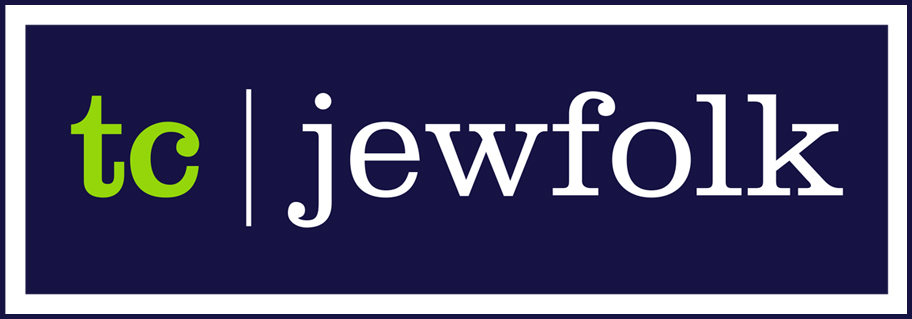One roadblock on my path to official Jewish status was deciding whether “converting” to Judaism was even possible. Christianity has a checklist—aka the Nicene Creed. If you can affirm your belief in its set of tenets, you can proclaim yourself Christian.
Judaism doesn’t make it that easy. “God is one” is about the only statement of belief, and I had already wrestled that through. But “being Jewish” involves mass of practice, history, tradition, customs, attitudes—and, yes, recipes. You can’t just will yourself into a Jewish state of mind and being.
A major breakthrough for me came from my friend Kate Searls, another Irish Jew, who reminded me that I already had a good chunk of the popular culture piece mastered. I can sing along to every tune by Harold Arlen and every lyric by Frank Loesser. Eons ago, for my first master’s degree, I defended a paper on The Assistant, by Bernard Malamud. When I taught freshman literature, Arthur Miller’s The Crucible was one of my assigned readings. I was a fan of Tony Kushner long before I was introduced to Harold and Lawrence.
Owning that second slice of the Jewish pie (as Rabbi Marcia Zimmerman describes it) gave me the courage to move forward.
But, of course, I keep second-guessing myself (which is probably the best proof possible that I am indeed a Jew). How and to what extent can these literary and musical icons inform a Jewish identity? Is it just filial piety—they are great writers, lyricists, composers who happen to be Jews, and I bask in their reflected glory? Or is there something about their Jewishishness that contributes to their art?
I am not the only one pondering that question. The Jewish Studies Center at the University of Wisconsin/Madison hosts an annual conference on Jewish arts. Their purpose is to explore the “Jewishness” that is often overlooked when Jewish writers, artists and musicians don’t deal directly with Jewish subject matter.
Tony Kushner is identified as a “gay” playwright. Betty Freidan and Gloria Steinem are identified as “feminist” thinkers. Arthur Miller was an “American” dramatist best known for his portrayal of Puritan America. Leonard Nimoy is forever “Vulcan.”
For all of these cultural icons, “Jewish” isn’t even a hyphenate in their identity. The second thing you think of is “Bolshevik” for Kushner, “journalist” for Steinem, “Mr. Marilyn Monroe” for Miller. Nimoy’s association with his Orthodox upbringing might be a little stronger since he turned the priestly benediction into the Vulcan salute, but you’re more likely to get a geeky pushback like “well, actually, Spock was half human.”
But each of these people has admitted that Jewishness is more than a coincidence.
Kushner is an avowed atheist, but he grew up in a home that used the Freedom Seder, originally published by Ramparts Magazine in 1969 to honor the first anniversary of the death of Martin Luther King, Junior. Wouldn’t that experience resonate as he wrote the screenplay for Lincoln? “I am a Jewish writer, and I am a gay writer, and I am an American writer, and I don’t see any point in trying to argue about that. Maybe if I was a better writer than I am then I would think I’ve transcended all of these things, but if Tolstoy didn’t transcend being Russian, fair bet that neither I nor any of the people we’ve mentioned (Bernard Malamud, Saul Bellow, Philip Roth, Cynthia Ozick) have transcended our Amerian-ness, or our Jewishness,” he told an interviewer at a 92nd Street Y presentation.
Gloria Steinem has long taken part in a women’s seder that she called “the first spiritually-centered occasion in my feminist life.” Although she is from an interfaith family, she has said, “Never in my life have I identified myself as a Christian, but wherever there is antisemitism, I identify as a Jew.”
Debate has long raged over whether Willy Loman, the protagonist of Miller’s Death of a Salesman, was intended to be Jewish. The Crucible was a near-real-time indictment of the McCarthy witch hunts, but it took Miller 20 years to deal with the Holocaust in Incident at Vichy. In that play, as in The Crucible, a righteous man sacrifices himself because he identifies with outsiders, although he is not one.
Identifying with outsiders is, of course, at the heart of the original StarTrek. Gene Rodenberry was raised a Southern Baptist, but the crew of the Enterprise exemplified diversity before it was cool. While Captain Kirk may have seemed like the ultimate WASP, William Shatner, like Nimoy, was raised Jewish in Canada and experienced anti-semitism.
That may be the key: the Jewish experience provides outsider insight—the intellectual and emotional distance that enables clear observation. Outsider insight is what artists need. Anyone can be born with the outsider’s perspective–even someone like me, who could join the Daughters of the American Revolution if I wanted to (which I don’t). But it is likelier in some circumstances, like diaspora. Eugene O’Neill, meet Arthur Miller.

